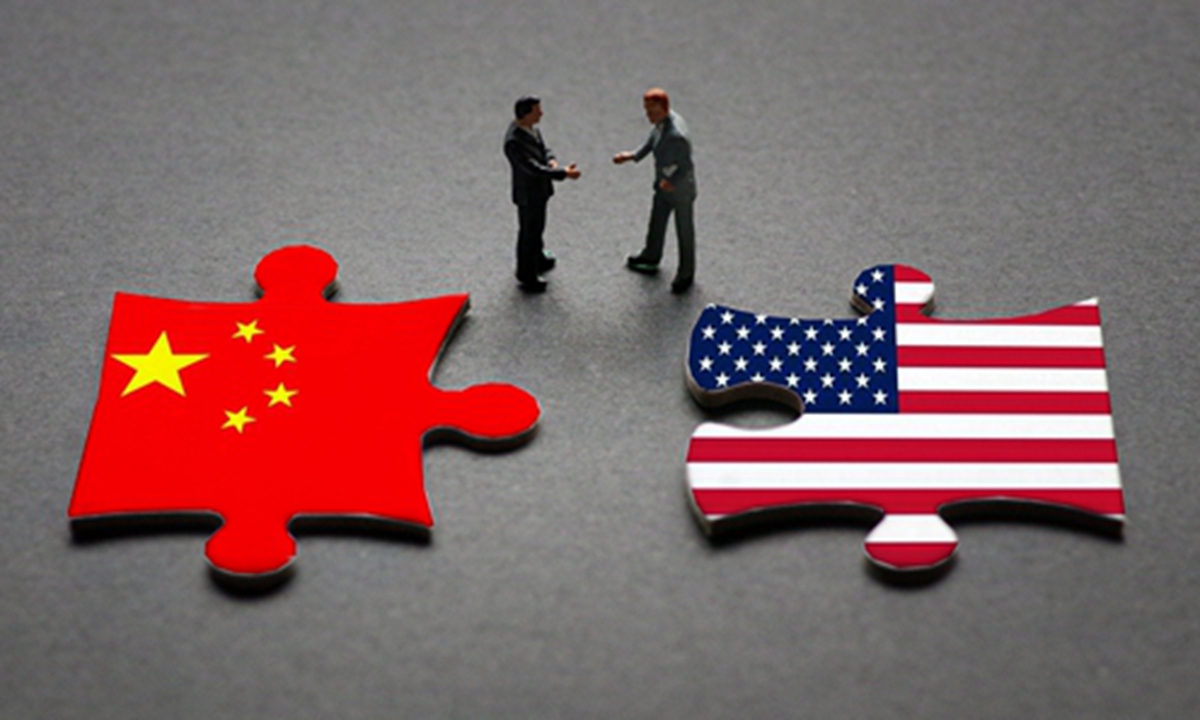People-to-people exchanges always the source of vitality in China-US relations: Global Times editorial

Photo: IC
"The collection of stories of China-US friendship and cooperation" project, jointly launched by the Global Times and People's Daily Digital Communication, has sparked positive reactions and discussions in both China and the US since its debut at the 2024 Kuliang Forum recently. The history of people-to-people exchanges between China and the US runs deep. This initiative aims to uncover more profound stories of exchange, like those rooted in Kuliang, and to preserve the bonds of friendship between the two peoples. As an integral part of China-US relations, people-to-people exchanges serve as the foundation of mutual cooperation and remain a vital source of vitality in bilateral relations.
The people of the two countries still remember the Flying Tigers standing shoulder to shoulder with Chinese troops during the war of resistance against Japanese aggression, as well as the American journalist Edgar Snow's publication of Red Star Over China. Over 50 years ago, "ping-pong diplomacy" created the story of "the little ball moves the big ball," leading to the normalization of China-US relations and showcasing the extraordinary power of grass-roots exchanges in strengthening ties between the two nations. After the door to China-US relations reopened, approximately 2.4 million Chinese students have studied in the US. Through continuous interactions, the Chinese have come to understand the US, and Americans have come to understand China. More importantly, China and the US are closely linked. Generation after generation of individuals dedicated to China-US friendship have worked tirelessly to advance cooperation across various fields.
The resilience and stability that have weathered the storms of history are defining features of the people-to-people exchanges between China and the US. History has shown that the people's desire for communication and interaction is an unstoppable trend. Next month, pandas Bao Li and Qing Bao will debut at the Smithsonian National Zoo in Washington, yet the "panda fever" in the capital has already begun to warm up. The Associated Press headline, "The pandas are coming! The pandas are coming!" vividly captures the anticipation and excitement of the American public. This historical trend plays a foundational role in the development of China-US relations. Recently, an American media figure expressed concern, cautioning that the US and China cannot afford to "look at each other through a straw." To overcome such narrow perspectives, we must expand the breadth and depth of people-to-people exchanges between the two countries.
"The hope of the China-US relationship lies in the people, its foundation is in our societies, its future depends on the youth, and its vitality comes from exchanges at subnational levels." Since the summit in San Francisco between Chinese and US leaders, many American schools - including the University of Virginia, Muscatine High School in Iowa, Lincoln High School in the state of Washington, and Strathcona High School - have sent teachers and students to China for study and exchange. They have explored the Forbidden City in Beijing, seen pandas in Chengdu, and visited mangrove forests in Shenzhen... As the items on their "wish lists" are checked off one by one, many Chinese peers have been added to their "friends lists," leaving a more complete and amicable image of China in their hearts. In them, we see the vitality and infinite possibilities for a new chapter in China-US relations. Today, Taylor Swift has a large fan base in China, and Black Myth: Wukong has captivated many players in the US. The youth on the internet are moving toward a "globalization" of lifestyle, and they are the hope for the long-term peaceful coexistence of China and the US on this planet in the future.
The China-US relationship has experienced ups and downs in the past, but China's steadfast commitment to promoting friendly exchanges between the peoples of China and the US has remained unchanged. This is rooted in an understanding of the historical context of China-US relations and a grasp of the overall trend. Nowadays, the visa application process for US citizens traveling to China has become more efficient and convenient. Since the "50,000 in five years" initiative was proposed over a year ago, about 14,000 American youths have visited China for exchange and study, marking many individuals' first experiences of flying, going abroad, and visiting China. We also hope that the US side will meet the Chinese side halfway to reduce barriers and avoid creating a "chilling effect" in areas such as high technology and people-to-people exchanges, thereby building more bridges, paving more roads, and providing greater conveniences for people-to-people exchanges between the two countries. The enthusiasm for China-US exchanges needs to be nurtured by both sides, and both governments have the responsibility to establish and improve a long-term mechanism for civil exchanges, ensuring that the source of vitality in China-US relations remains clear and abundant.
During the meeting between Chinese President Xi Jinping and US President Joe Biden in Lima last month, it was emphasized that China's "desire to carry forward the traditional friendship between the Chinese and American peoples remains unchanged." This is an important point among the "four unchanged" aspects of China's diplomacy toward the US, which will not be affected by US domestic politics or by certain unresolved issues between the two nations. One fact remains clear: The demand for cooperation between China and the US is strong.
Expanding the "cooperation list," enlarging the "cooperation cake," and making the development of both sides mutually beneficial are things that China and the US should and must do. By handling this matter well, China and the US can benefit not only themselves but also the world. Exploring the right way for China and the US to get along with each other is a pressing issue of our time. China is willing to actively engage in this endeavor and hopes that the US side can also contribute wisdom and strength to this important task.


